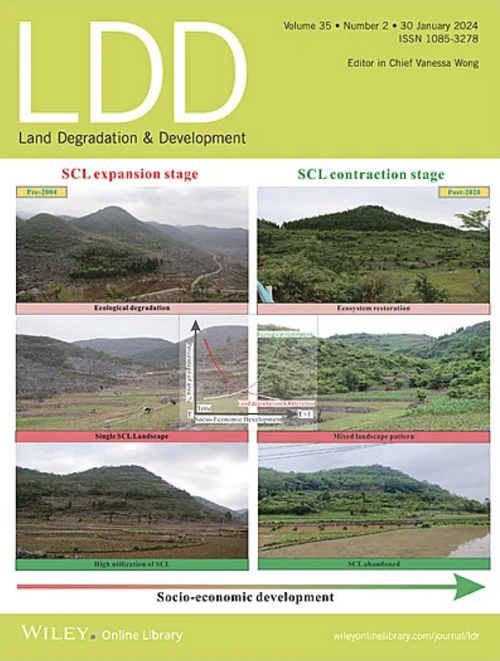皮沙砂岩施用方法决定了沙质土壤的氮浸出过程
IF 3.6
2区 农林科学
Q2 ENVIRONMENTAL SCIENCES
引用次数: 0
摘要
沙质土壤氮淋失降低了氮肥的有效性,增加了污染地下水的风险。由于蒙脱石的存在,可以利用皮沙砂岩来保持沙质土壤中的水分和养分,但施用方式(模式和水平)对N淋失的影响尚不清楚。通过淋溶试验研究了不同施氮方式和施氮水平对皮沙砂岩氮淋失的影响。构建土柱,包括4种施用模式(U,上层土柱;M,中间层;L,下层;混合,与沙土混合)和三个施用水平(10%,30%,50%,质量比)。结果表明,并非所有处理都能降低沙质土壤的氮淋失,施用方式的影响大于施用水平。与砂质土相比,混合施肥模式对减少N淋溶效果最好(18.8% ~ 28.3%),且随着施用量的增加,可减少更多的N淋溶。L模式能有效降低N淋失(3.5% ~ 20.2%)和排水损失(12% ~ 33.8%)。在选择U和M模式时应谨慎,因为有增加N淋失的风险。合理利用沙石有助于减少沙质土壤的氮淋失。未来需要更多的实地工作来扩展我们的发现。本文章由计算机程序翻译,如有差异,请以英文原文为准。
Pisha Sandstone Application Methods Determined the Processes of Nitrogen Leaching in Sandy Soil
Nitrogen (N) leaching loss in sandy soil reduces the effectiveness of N fertilizer and increases the risk of polluting groundwater. Pisha sandstone could be used to maintain the water and nutrients in sandy soil due to the presence of montmorillonite, but the impacts of application methods (patterns and levels) on N leaching loss remain unclear. Leaching experiments were conducted to investigate the impacts of Pisha sandstone application patterns and levels on N leaching loss. Soil columns were constructed, including four application patterns (U, upper layer in soil column; M, middle layer; L, lower layer; Mix, mixing with sandy soil) and three application levels (10%, 30%, 50%, mass ratio). Results indicated that not all treatments showed a decrease in N leaching from sandy soil, and the application patterns had a higher effect than application levels. Compared with the sandy soil, the Mix application pattern presented the best impact in reducing N leaching (18.8%—28.3%) and could reduce more leaching N by increasing application levels. The L pattern effectively reduced N leaching loss (3.5%—20.2%) and water drainage loss (12%—33.8%). A cautious attitude should be adopted in selecting U and M patterns due to the risk of increasing N leaching loss. The reasonable use of Pisha sandstone was helpful in reducing N leaching loss from sandy soil. More fieldwork is needed to extend our findings in the future.
求助全文
通过发布文献求助,成功后即可免费获取论文全文。
去求助
来源期刊

Land Degradation & Development
农林科学-环境科学
CiteScore
7.70
自引率
8.50%
发文量
379
审稿时长
5.5 months
期刊介绍:
Land Degradation & Development is an international journal which seeks to promote rational study of the recognition, monitoring, control and rehabilitation of degradation in terrestrial environments. The journal focuses on:
- what land degradation is;
- what causes land degradation;
- the impacts of land degradation
- the scale of land degradation;
- the history, current status or future trends of land degradation;
- avoidance, mitigation and control of land degradation;
- remedial actions to rehabilitate or restore degraded land;
- sustainable land management.
 求助内容:
求助内容: 应助结果提醒方式:
应助结果提醒方式:


